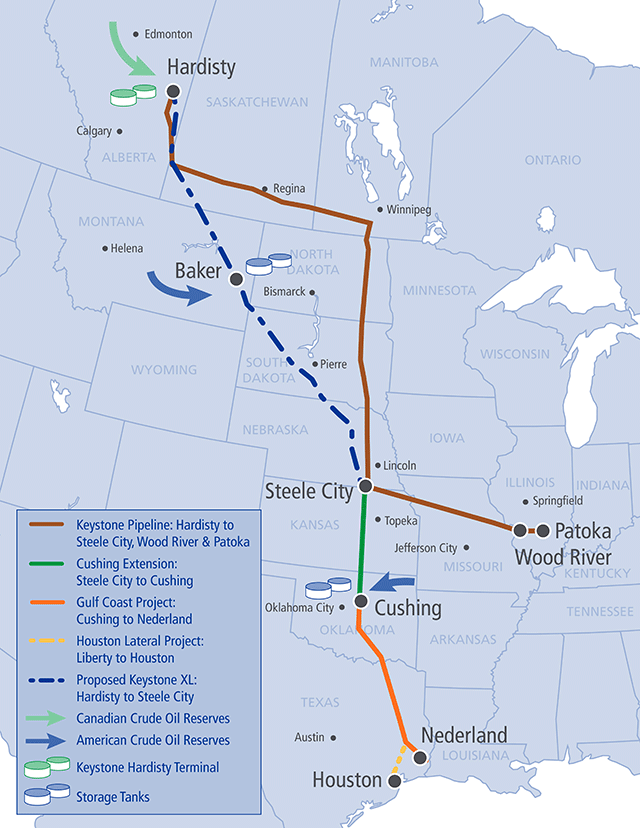After six years and 17,000 pages of environmental studies, TransCanada (ticker: TRP) is still waiting alongside an estimated 42,000 U.S. workers who could fill direct and indirect pipeline-related jobs. Sitting in the queue is the remaining 1,200 miles of oil pipeline required to start Canadian crude oil flowing from Saskatchewan to U.S. refineries on the Gulf coast.
According the company’s Web site, the U.S. State Department’s Final Supplemental Environmental Impact Statement found that the project would support 42,000 direct and indirect jobs, contribute more than $3 billion towards U.S. GDP and provide “a substantial increase in tax revenues for counties along the pipeline route, with 17 of 27 expected to see increases of 10 percent or more.”
Last week TransCanada’s CEO said the cost of building the Keystone XL Pipeline could possibly go as high as $10 billion, almost double the previously projected $5.4 billion estimate, citing increased permitting costs across the remaining states, rising maintenance costs and inflation.
The southern 400 miles of Keystone, from the Cushing, Oklahoma, oil terminal to Port Arthur, Texas, is already operating. If built, the full Keystone XL could transport up to 830,000 BOPD to U.S. refineries. The proposed route of the northern 1,200 miles extends diagonally across Montana, South Dakota and Nebraska.
“The State Department environmental impact reports have concluded that Keystone XL would have a degree of safety greater than any other crude oil pipeline in operation in the U.S. as a result of 59 additional special safety conditions that go above and beyond federal regulations,” according to the company’s Web site.
“The State Department said in April it won’t make a final decision on the pipeline until the resolution of a Nebraska state Supreme Court case, which questions a state law that approved the pipeline’s route through that state. That may not happen until the end of this year or early 2015,” according to the Wall Street Journal.
For a quick view of the current state of Keystone XL Pipeline, see the Wall Street Journal blog Keystone Turns 6: Where the Debate Stands.
[sam_ad id=”32″ codes=”true”]
Important disclosures: The information provided herein is believed to be reliable; however, EnerCom, Inc. makes no representation or warranty as to its completeness or accuracy. EnerCom’s conclusions are based upon information gathered from sources deemed to be reliable. This note is not intended as an offer or solicitation for the purchase or sale of any security or financial instrument of any company mentioned in this note. This note was prepared for general circulation and does not provide investment recommendations specific to individual investors. All readers of the note must make their own investment decisions based upon their specific investment objectives and financial situation utilizing their own financial advisors as they deem necessary. Investors should consider a company’s entire financial and operational structure in making any investment decisions. Past performance of any company discussed in this note should not be taken as an indication or guarantee of future results. EnerCom is a multi-disciplined management consulting services firm that regularly intends to seek business, or currently may be undertaking business, with companies covered on Oil & Gas 360®, and thereby seeks to receive compensation from these companies for its services. In addition, EnerCom, or its principals or employees, may have an economic interest in any of these companies. As a result, readers of EnerCom’s Oil & Gas 360® should be aware that the firm may have a conflict of interest that could affect the objectivity of this note. The company or companies covered in this note did not review the note prior to publication. EnerCom, or its principals or employees, may have an economic interest in any of the companies covered in this report or on Oil & Gas 360®. As a result, readers of EnerCom’s reports or Oil & Gas 360® should be aware that the firm may have a conflict of interest that could affect the objectivity of this report.


